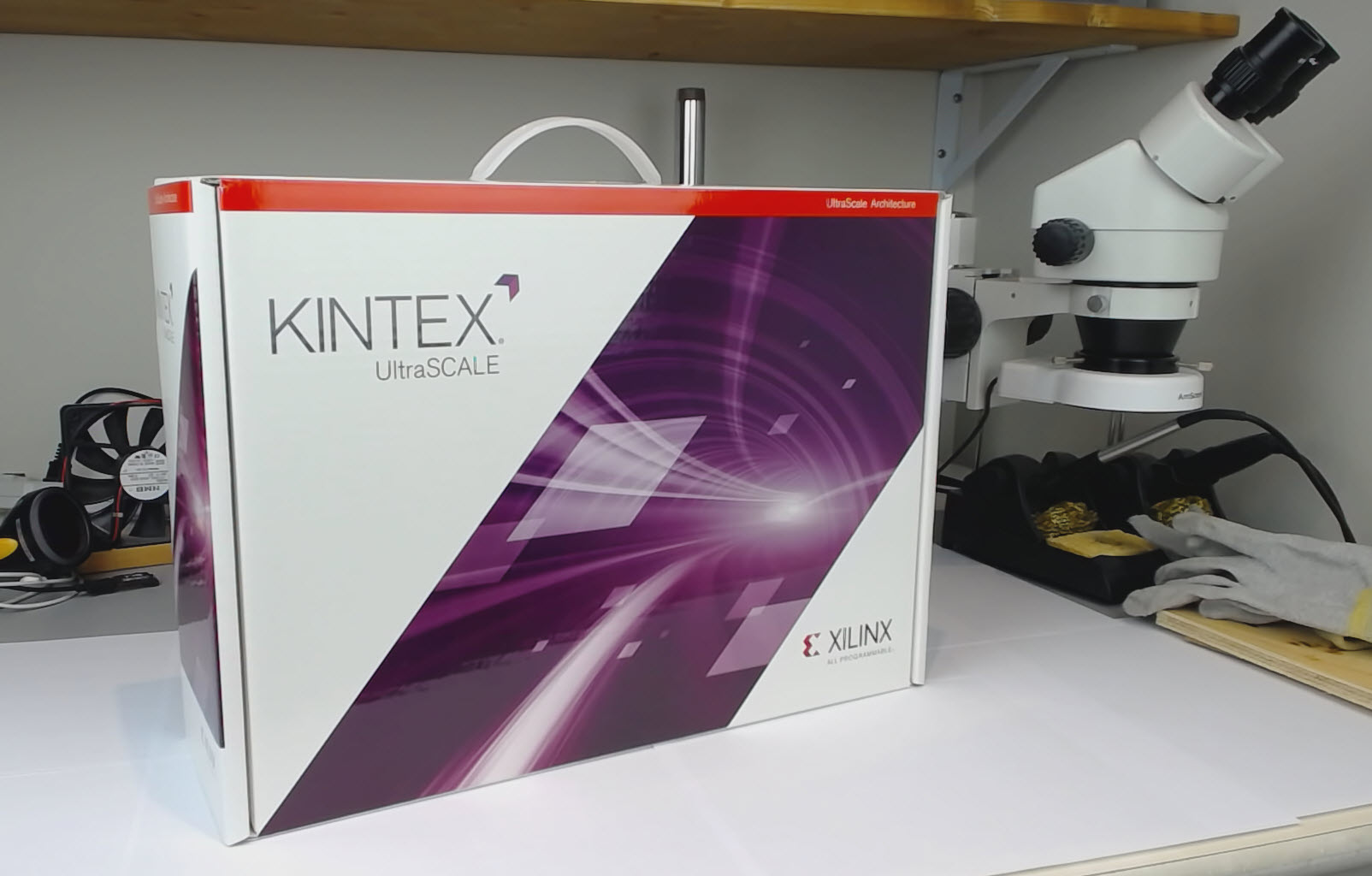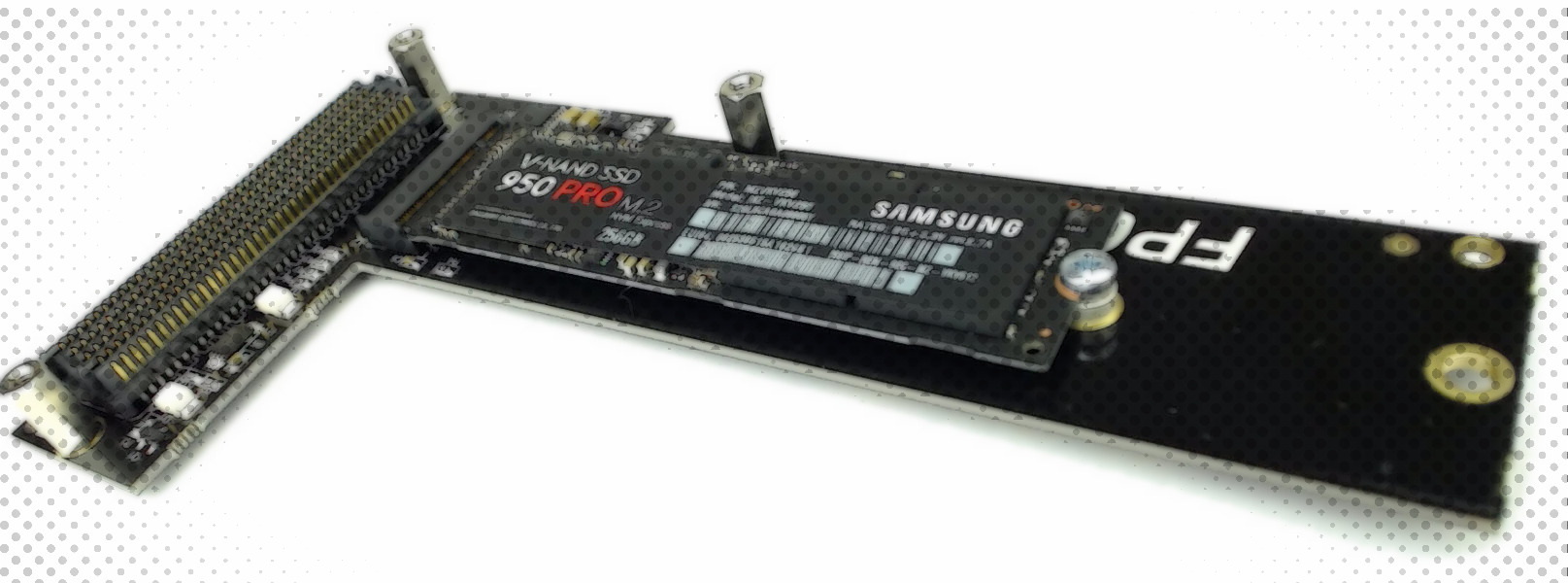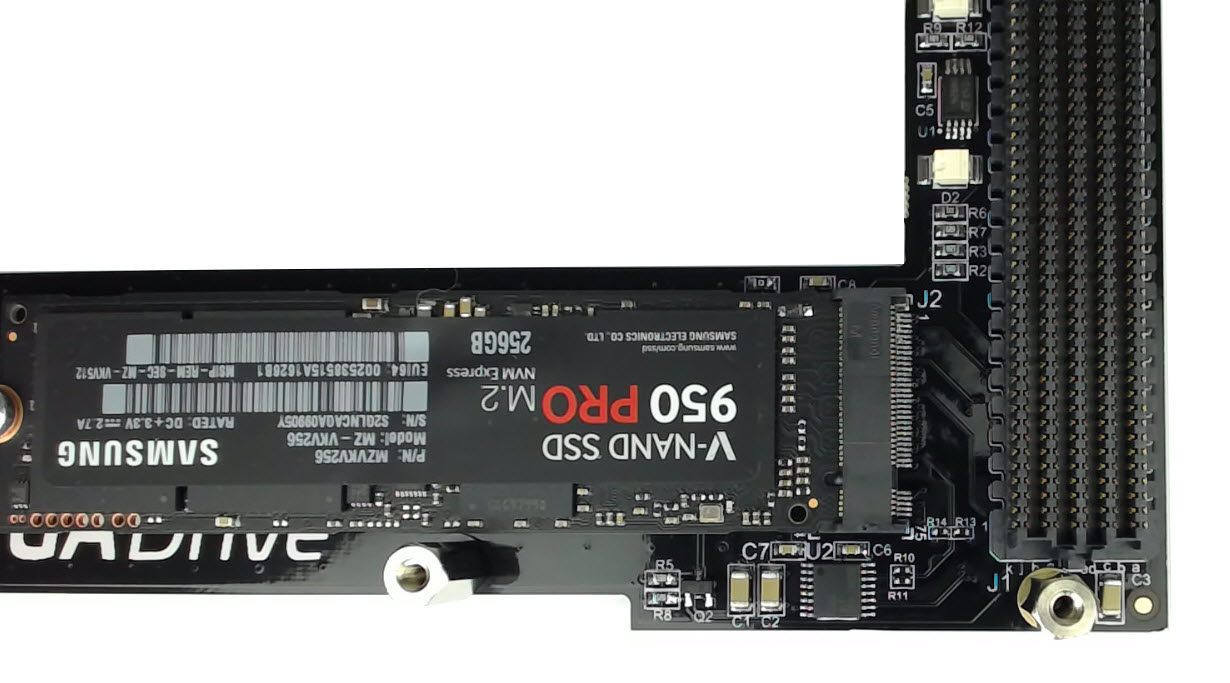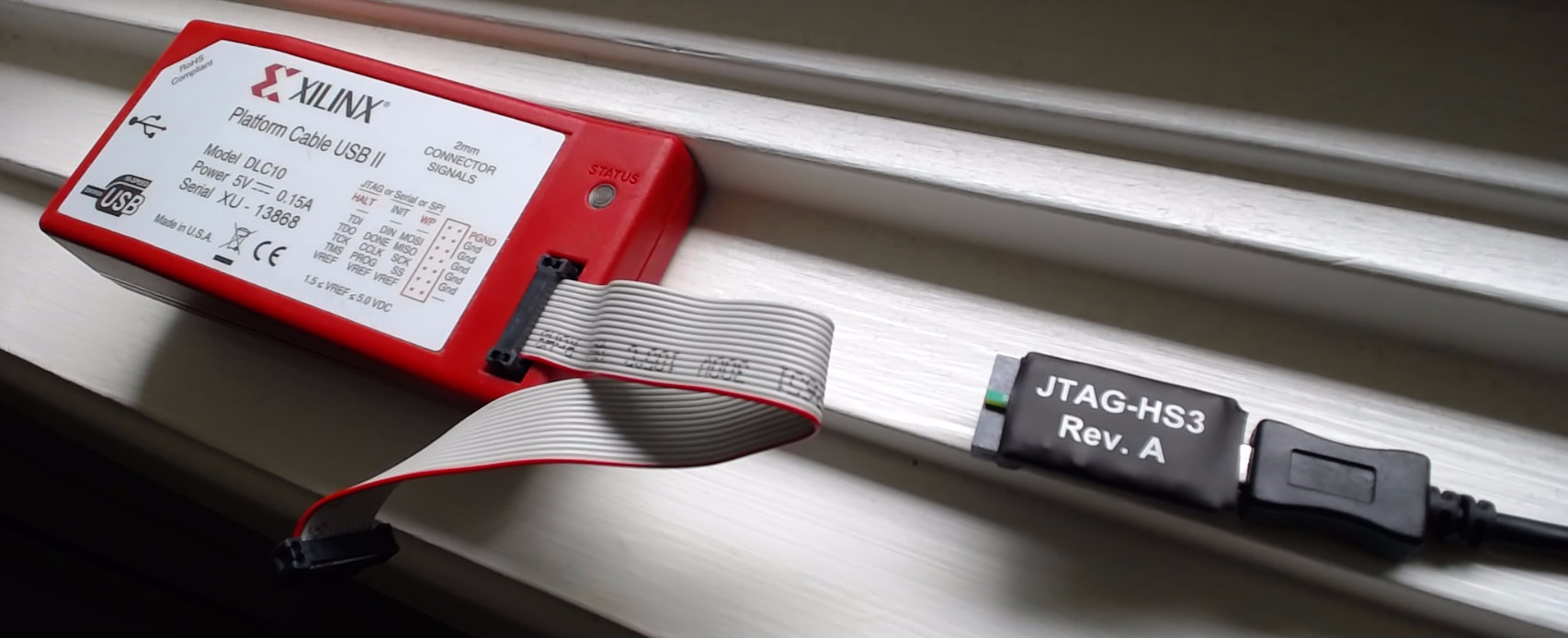Just released a video showing how to connect an M.2 SSD to the FPGA Drive FMC.
A quick look at the Kintex Ultrascale KCU105

I’ve got the Kintex Ultrascale Development Kit on my desk today so it’s a good time to take a look inside and see what’s special about this board. The Ultrascale (20nm) and Ultrascale+ (16nm) FPGAs are taking over from the Series-7 devices (28nm), and I’ve seen more and more customer interest in them in recent months. The Kintex Ultrascale is the little brother of the Ultrascale family, providing the “best price/performance/watt” and “an optimum blend of capability and cost-effectiveness” according to Xilinx.
[Read More]
Tcl Automation Tips for Vivado and Xilinx SDK

Tcl automation is one of the most powerful features integrated into the Vivado and Xilinx SDK tools and should be fully exploited to maximize your productivity as an FPGA developer. In this post I’ve put together a “cheat sheet” of some of the most useful commands and tricks that you can use to get more done through Tcl scripting. If you want more things added to the list, please let me know in the comments section at the end.
[Read More]
NVMe Host IP tested on FPGA Drive

I’ve been totally overloaded with projects in the last couple months but I’m back with some really exciting news today. A few months back a company called IntelliProp, based in Colorado, released a NVMe Host Accelerator IP core for interfacing FPGAs with NVMe SSDs. This IP core allows reads and writes to be performed directly from the FPGA fabric, without the latency overhead of an operating system (read about the NVMe speed tests I did under PetaLinux).
[Read More]
FPGA Drive now available to purchase

Orders can now be placed for the FPGA Drive products on the Opsero website. Both the PCIe and FMC versions allow you to connect an M.2 PCIe solid-state drive to an FPGA development board and both can be purchased at the same price of $249 USD (solid-state drive not included).
The PCIe version has an 8-lane PCIe edge connector for interfacing with the PCIe blade (aka. goldfingers) of an FPGA development board.
[Read More]
Micron's new M.2 Solid-State Drive

Computer memory giant, Micron, sent me a pre-production sample of their brand new M.2 NVMe solid-state drive. I tested it under PetaLinux on the PicoZed FMC Carrier Card V2 and the FPGA Drive adapter, and as expected, it passed all tests with flying colours. Although all of my previous tests were done with the Samsung VNAND 950 Pro SSD, the FPGA Drive adapter is designed to work with all M.2 PCIe compliant SSDs, and this test is confirmation of that.
[Read More]
M.2 NGFF Loopback Module
Update 2018-05-03: You can now buy a basic M.2 NGFF loopback module from Opsero
Half the fun of making cool stuff is sharing it with others. The photos I’m sharing in this post are of my new M.2 NGFF loopback module - it’s a M.2 form-factor module with a loopback on each of the 4 PCIe lanes, as well as some electronics to test other connections such as the 3.3V power supply and the 100MHz clock.
[Read More]
Measuring the speed of an NVMe PCIe SSD in PetaLinux
With FPGA Drive we can connect an NVM Express SSD to an FPGA, but what kind of real-world read and write speeds can we achieve with an FPGA? The answer is: it depends. The R/W speed of an SSD depends as much on the SSD as it does on the system it’s connected to. If I connect my SSD to a 286, I can’t expect to get the same performance as when it’s connected to a Xeon.
[Read More]
At last! Affordable and fast, non-volatile storage for FPGAs

Let me introduce you to Opsero’s latest offering: FPGA Drive FMC, a new FPGA Mezzanine Card that allows you to connect an NVMe PCIe solid-state drive to your FPGA.
There’s got to be a better way. In the past, if you were developing an FPGA based product that needed a large amount of fast non-volatile storage, the best solution was to connect a SATA drive. Physical interfacing was pretty simple because all you needed was one gigabit transceiver.
[Read More]
Bye bye Platform Cable USB II, Hello JTAG HS3

Now that I think about it, I’ve been using my Xilinx Platform Cable USB II for 10 years now!!! That’s a terrific run in my opinion, I got it in a kit for the Virtex-5 ML505 board in 2006 and I would have kept using it if I didn’t start getting these strange error messages recently. So from a recommendation, I got myself a JTAG HS3 from Digilent and it is just ridiculously better.
[Read More]